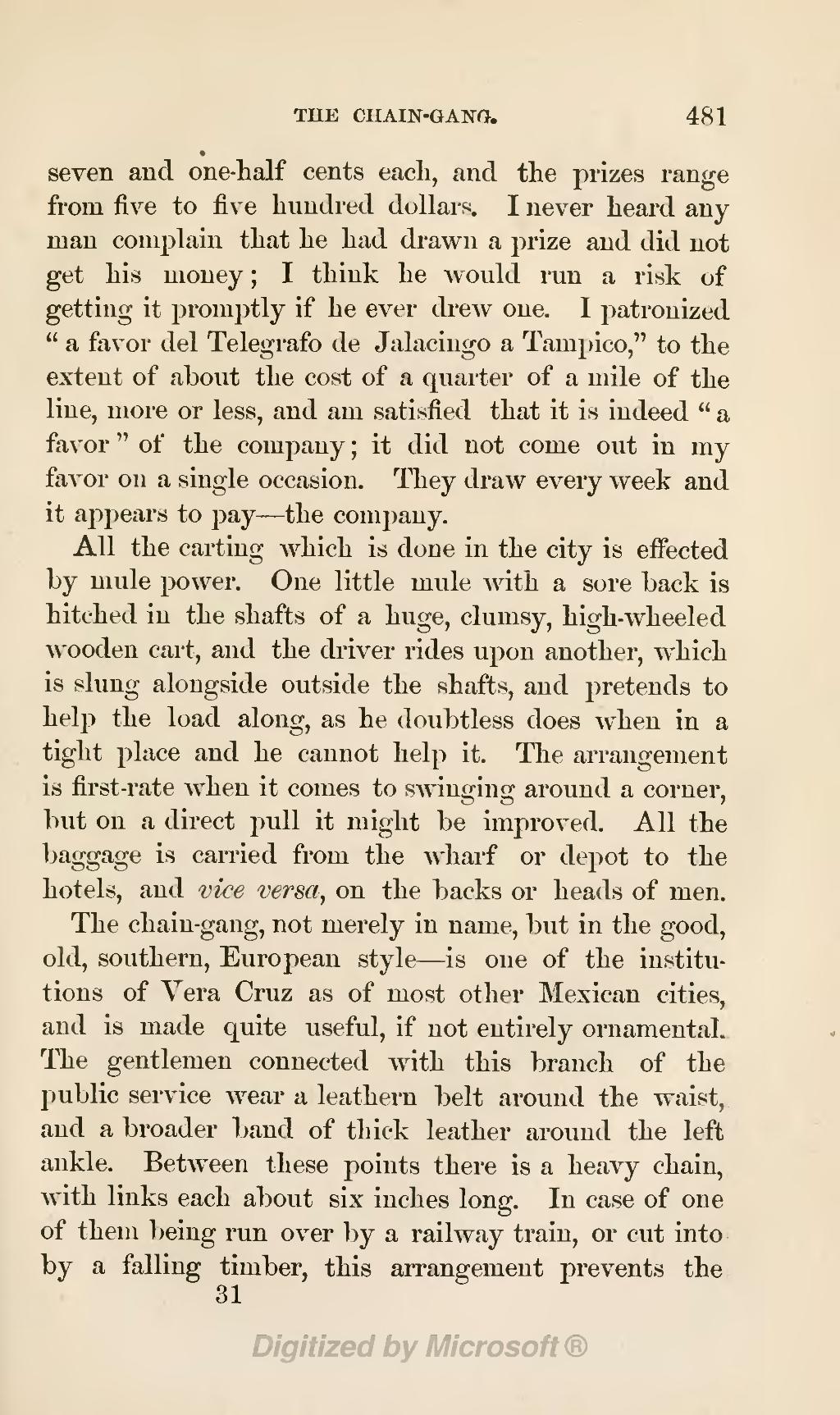seven and one-half cents each, and the prizes range from five to five hundred dollars. I never heard any man complain that he had drawn a prize and did not get his money; I think he would run a risk of getting it promptly if he ever drew one. I patronized "a favor del Telegrafo de Jalacingo a Tampico," to the extent of about the cost of a quarter of a mile of the line, more or less, and am satisfied that it is indeed "a favor" of the company; it did not come out in my favor on a single occasion. They draw every week and it appears to pay—the company.
All the carting which is done in the city is effected by mule power. One little mule with a sore back is hitched in the shafts of a huge, clumsy, high-wheeled wooden cart, and the driver rides upon another, which is slung alongside outside the shafts, and pretends to help the load along, as he doubtless does when in a tight place and he cannot help it. The arrangement is first-rate when it comes to swinging around a corner, but on a direct pull it might be improved. All the baggage is carried from the wharf or depot to the hotels, and vice versa, on the backs or heads of men.
The chain-gang, not merely in name, but in the good, old, southern, European style—is one of the institutions of Vera Cruz as of most other Mexican cities, and is made quite useful, if not entirely ornamental. The gentlemen connected with this branch of the public service wear a leathern belt around the waist, and a broader band of thick leather around the left ankle. Between these points there is a heavy chain, with links each about six inches long. In case of one of them being run over by a railway train, or cut into by a falling timber, this arrangement prevents the
